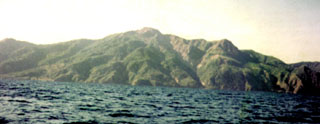Report on Paluweh (Indonesia) — 30 January-5 February 2013
Smithsonian Institution / US Geological Survey
Weekly Volcanic Activity Report, 30 January-5 February 2013
Managing Editor: Sally Sennert.
Please cite this report as:
Global Volcanism Program, 2013. Report on Paluweh (Indonesia) (Sennert, S, ed.). Weekly Volcanic Activity Report, 30 January-5 February 2013. Smithsonian Institution and US Geological Survey.
Paluweh
Indonesia
8.32°S, 121.708°E; summit elev. 875 m
All times are local (unless otherwise noted)
According to news articles, an explosion from Paluweh occurred at 2300 on 2 February and was clearly heard by local residents. Authorities evacuated by boat all residents from the eight villages on the island. Ashfall was reported during 2-3 February.
Based on analyses of satellite imagery, wind data, and pilot reports, the Darwin VAAC reported that on 3 February ash plumes from Paluweh rose to altitudes of 13.1-13.7 km (43,000-45,000 ft) a.s.l. and drifted 325-590 km SE, S, and SW. Elevated levels of sulfur dioxide were also detected. The next day ash plumes at an altitude of 7.6 km (25,000 ft) a.s.l. were observed.
Geological Summary. Paluweh, also known as Rokatenda, forms the 8-km-wide island of Palu'e north of the volcanic arc that cuts across Flores Island. The broad irregular summit region contains overlapping craters up to 900 m wide and several lava domes. Several flank vents occur along a NW-trending fissure. A large eruption in 1928 included strong explosive activity accompanied by landslide-induced tsunamis and lava dome emplacement. Pyroclastic flows in August 2013 resulted in fatalities.
Sources: TribunNews.com, Darwin Volcanic Ash Advisory Centre (VAAC)

